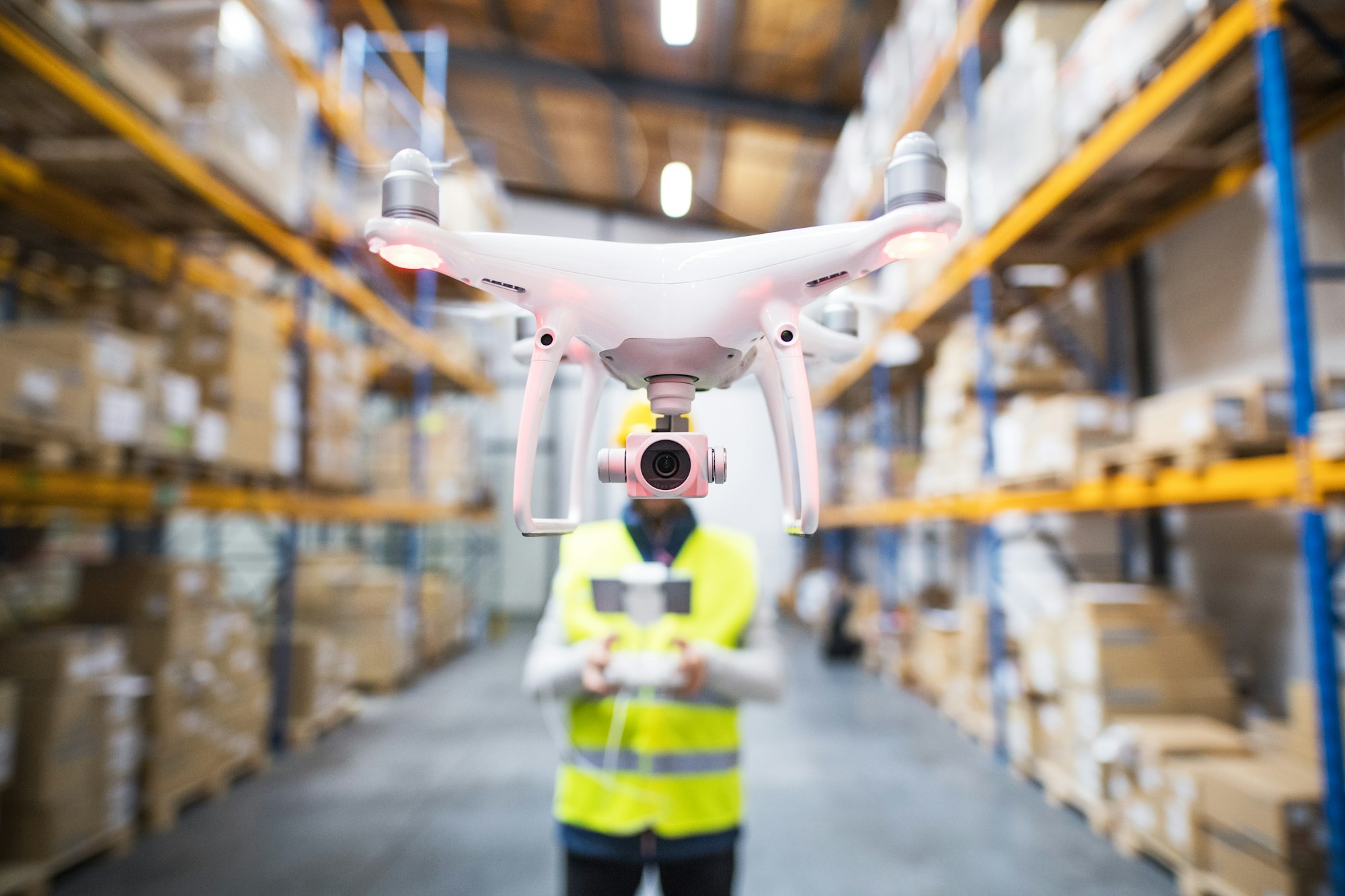Last week there was a lot of news about the use of drones in supply chains and logistics operations.
As Joann Muller reported at Axios, “Walmart and its drone delivery partner DroneUp are ending drone delivery in three states to focus on perfecting aerial package delivery service in the Dallas-Fort Worth area.”
“We’re really focused on automation and a drone with higher payload capacity and longer range,” DroneUp CEO Tom Walker told Axios.
Why is this important? Because drone deliveries are currently too expensive. Walker says drone delivery costs about $30, but the goal is to get the price down to under $7, which would be almost the same as ground delivery.
How will DroneUp reduce costs? By further automating the delivery process. Here are some details from an August 6, 2024 press release about what the company has been able to accomplish so far:
More deliveries per hour – DroneUp has set a new industry standard with a record-breaking 40 deliveries per hour with up to 10 pounds of payload capacity.
Improved pilot-to-drone ratio – Automation testing has achieved a ratio of one to many operators per drone, helping to reduce delivery costs for DroneUp’s partners.
Use of innovative, proprietary software – Uncrew: DroneUp’s cloud-based platform enables users to manage missions from anywhere in the world, leveraging real-time UTM geospatial data for accurate airspace, terrain and traffic information. Automated mission plans are generated from HubOps mission requests, allowing operators to safely and efficiently monitor up to 20 simultaneous missions from a unified interface.
Also last week, A2Z Drone Delivery, Inc. launched “a portfolio of autonomous drone docks and a companion UAV adapted to the system’s automatic loading capability.” Here’s more from the press release:
The A2Z AirDock offers the unique ability to allow UAVs to travel from dock to dock to automatically recharge batteries and pick up or deliver packages, infinitely expanding the drone’s operational range. A2Z Drone Delivery offers several variants of its portable docks for a single drone and permanent docks for multiple drones. A single A2Z AirDock can be deployed to eliminate the human labor of charging a drone, or multiple AirDocks can be deployed as a network to more cost-effectively scale the reach of multiple drone services operating on a shared infrastructure.
“Unmanned drones can provide increased efficiency, emissions reduction and cost savings in many applications. Our new AirDocks enable greater reach of these services while minimizing the financial barrier to entry for such dynamic infrastructure in the sky,” said Aaron Zhang, CEO and co-founder of A2Z Drone Delivery. “Because our new drone docks can be shared, multiple UAVs can operate in the same area on the same dock network to more easily bring on-demand autonomous drone capabilities online across a vast region.”
There is no doubt that great progress has been made in drone deliveries over the past decade. However, as I said in June in “How Much Would You Pay for Drone Delivery?”, given current costs (and other technological, regulatory and societal hurdles that still exist), there is still a lot of work to be done to make drone deliveries cost-effective and scalable.
However, the business case for using drones in warehouses and construction sites is currently much more compelling. IKEA, for example, announced “the next phase of its drone technology: an improved AI-powered system that can work side-by-side with employees 24/7.” Here are some details from the press release:
In 2021, IKEA launched an innovative collaboration with Verity, an AI and robotics provider, to develop a fully autonomous drone solution for its warehouses. The first drone flew at IKEA Switzerland, and today more than 250 drones are in operation at 73 locations in nine countries.
The use of 24/7 drones is transforming IKEA’s inventory management, significantly increasing operational efficiency while improving employee productivity. The new system enables simultaneous inventory checks, eliminating the need to block aisles and interrupt workflows. Employees can take immediate action based on real-time data from the drones, significantly increasing product accuracy and reducing their workload.
The integration of 24/7 operational drones in IKEA warehouses is not only a big step in inventory management, but also increases employee wellbeing. By taking over the physically demanding task of inventory control, these drones reduce the ergonomic burden on employees, allowing them to focus on easier and more interesting tasks.
Parag Parekh, Global CDO for IKEA Retail (Ingka Group), says: “The IKEA drones use an artificial intelligence-based algorithm to identify and photograph product storage locations. In addition, drone flights are pre-planned and use a custom indoor positioning system to target higher storage locations (for level 3 and above). Equipped with obstacle detection capabilities, these drones can avoid collisions by changing their flight paths.” According to the company, the solution meets all the requirements of the data protection assessment, including employee safety, integrity and privacy.
Much has been written about the use of robots in the warehouse, especially autonomous mobile robots. See for example “The tipping point and business model for warehouse robots” and “Robots in the warehouse: A question of when”. But as IKEA makes clear, flying robots (also called drones) will also work alongside AMRs and humans.
In short, for most of us, it will probably be years before drone deliveries are possible (if they ever happen on a large scale), but the warehouse of the future is already here.

